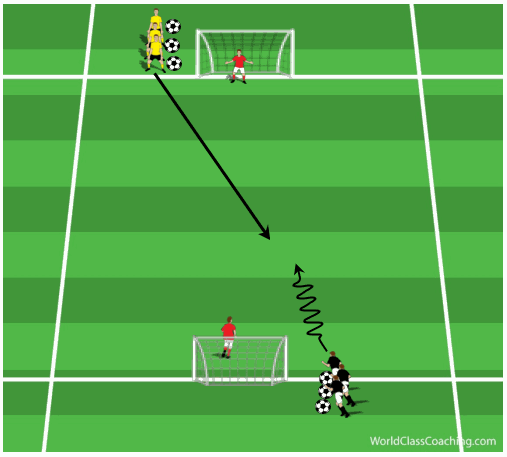To run a great program, all aspect of your team's operation have to make a positive contribution to the overall environment.
People will use the words "demanding", "competitive" or "intense" when describing their environment. I submit that you consider words like "safe", "engaging", "open" and "inviting".
We're talking here about the learning environment with the young players. There are other facets to environments such as a level of excellence, expectations. The biggest example for me: The Montreal Canadiens have an expectation to win the Stanley Cup, every year. Players who play for them know this and the team operates in that manner. The Toronto Maple Leafs have become a team that do not talk about the Stanley Cup, they talk about hoping to make the playoffs. Corporate environments interesting studies but are not much different than sports teams. Their overall environments reflect the expectations, and vice-versa. In this article we will talk about the learning environment.
"...when describing their learning environment ... consider words like 'safe', 'engaging', 'open'
and 'inviting'."
Before we move on, what do we mean by "safe"? Today you might think that would mean freedom from physical and mental abuse from adults, and we could/should include that. But for me, a "safe" environment is also someplace where a child can go, experiment and make a mistake with the knowledge that they will be encouraged to try again and be offered assistance/coaching if required. In an unsafe environment, learning cannot happen. An example in a classroom: a child puts up her hand, offers an incorrect answer and somebody laughs at them or tells them to shut-up. That child will no longer feel safe extending themselves into a discussion and their classroom experience is now negative. If you yell at a child for missing a shot they will look to pass from then on. A player who is berated for being beaten 1v1 will now offer up 10 yards of safety to their opponent with the ball. You get the idea.
An educational description of learning environment: The term learning environment encompasses learning resources and technology, means of teaching, modes of learning, and connections to societal and global contexts. The term also includes human behavioral and cultural dimensions, including the vital role of emotion in learning, and it requires us to examine and sometimes rethink the roles of teachers and students because the way in which they make use of spaces and bring wider societal influences into play animates the educational enterprise.
Your learning/coaching environment sets the stage for the learning that needs to take place. The very reason your art teacher had art hanging all over the room. And your auto mechanics teacher had car parts, advertising posters, reference charts and tools hanging on the wall .
Notice! It's called a learning environment, not a teaching environment. Focused on the player/student.
Factors affecting the learning environment:
Natural and physical surroundings: Location. Training surface. Climatic and atmospheric conditions. Prolonged exposure to heat and humidity decrease physical and mental efficiency.
What about the scene of the practice? Does it look like a training session is abut to happen? When the players arrive do they see cones, pinnies, etc all set up?
Time of day: Depending on time of year, co-existing with school schedule, fatigue, etc. eg. Are you going to have a more productive session on a Saturday morning or after dinner on the Sunday of a long weekend? Age is also a major factor in choosing a smart session time.
Social surroundings: These are tougher to control, but sometimes the effect on one player affects your team. They include the environment your players are subjected to at school, home and neighbourhood. Their socio-economic situation might also impact their learning, attendance, etc.
Teaching style: The delivery of your program, your body language, choice of words, suitable choice of teaching methods to suit the group, aids such as cones/agility poles/etc. Your ability to leave your bad day at work off the field will also impact your teaching style. In terms of body language, are you dressed like a soccer coach? Do you look the part?
Relationship with parents/stakeholders: Good or bad, all feelings off the field eventually find their way on to the field. Cancerous attitudes and actions, selfish comments and lack of co-operation makes life difficult. Here are two more articles to help with that: Parent Meeting Build trust .Your overall environment can also be affected by what happens in the world of social media.
Healthy peer group: When the players get along, there is less tension. Tension is a major obstacle to learning. A positive emotional climate among the players goers a long way in benefits for everybody involved with the team. Keep an eye out for situations involving cliques, bullying and various forms of exclusion.
If you have a positive training environment for the kids, individual and team success will follow.
Remember this: You work hard to set-up as positive learning environment as possible. While a few outside factors can negatively influence your environment, your positive program can influence your players and help them succeed in other learning situations.
And that, my friend, is your job as a coach.
Great links
http://www.edutopia.org/blog/20-tips-create-safe-learning-environment-rebecca-alber
http://www.trainingplace.com/source/research/designingenvironments.htm
http://net.educause.edu/ir/library/pdf/eli3021.pdf








